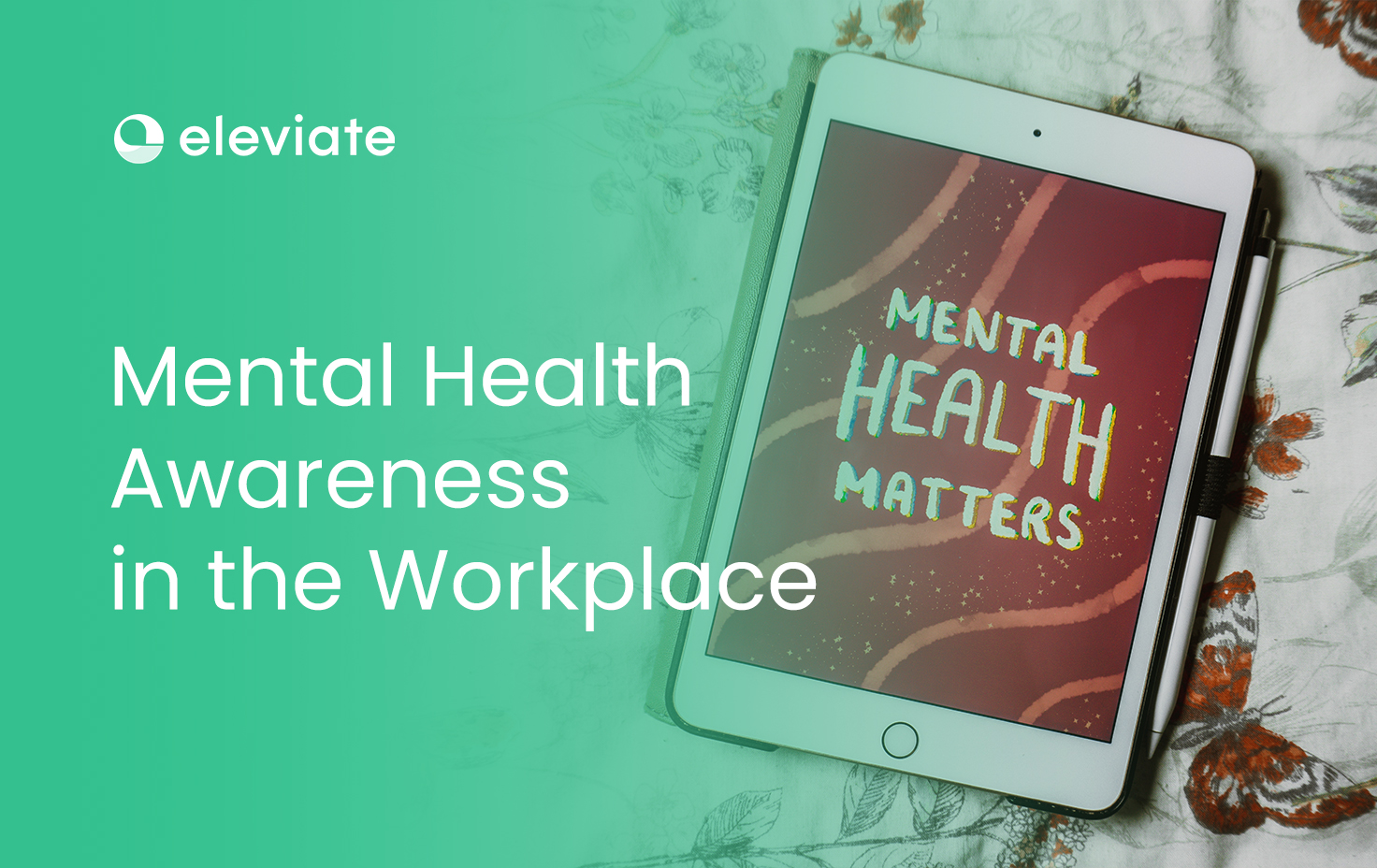At the first glance, you can think that a healthy workplace is one that’s sanitized, filled with daylight, has clean air, and features other standard attributes. This all is true. However, the concept of a healthy work environment is much deeper than that. It is also a place that can satisfy every employee’s medical claims through proper insurance and service. Also, it’s a place where the workforce and managers all exist in a friendly and tight-bonded community, where everyone is equal, valued, and supported.
As you can see, there are quite many features that distinguish a healthy organization. What are they? And how do you create a healthy work environment?
In this article, we will guide you through this matter in detail. After reading, you will have a better idea of what makes a healthy workplace, what benefits it can bring to your company, and how to establish such a workplace yourself.
Let’s dive in!
What Is a Healthy Work Environment?
A healthy work environment is a work environment where both employees and managers collaborate to foster healthy relationships, atmosphere, and behaviors so that every team member feels well and in safety. Although this term is very popular and common these days, it can be very hard to define as it spans too many factors and characteristics.
First of all, a healthy workplace is one where there is no space for toxicity. Instead, there is plenty of room for strong relationships, mutual respect, open communication, and similar positive attributes.
Apart from the relationships and atmosphere, a healthy workplace is also one that promotes healthy lifestyle practices and ensures that employees have everything to stay healthy, such as clean air, good sanitary, solid safety, and beyond.
Finally, a big role in a healthy workplace is devoted to mental health. The employees in such work environments should feel supported and productive, they should have the opportunity to thrive in their projects, stay motivated, and feel fulfillment from their work.
Importance of a Healthy Work Environment
The benefits of a sanitized and safe space are obvious - it contributes to employees’ basic health care and helps them avoid illness, keep their energy levels high, and, thus, perform better.
As for other attributes of a healthy workplace, they are mostly aimed at overall employee wellness and mental health. The ultimate goal of fostering a healthy culture and atmosphere is to ensure that your organization employs happy workers. If your employees are happy and healthy, they will demonstrate significantly higher job satisfaction and engagement. According to studies, increased employee engagement also offers you higher productivity and 21% greater profitability.As you can see the importance of a healthy environment and culture is so huge that it offers benefits on all levels - from personal satisfaction, physical and mental health, and well-being to better job satisfaction, retention, productivity, and, thus, revenue.

Signs of a Healthy Work Environment
Before we can tell you how to develop a workspace that will promote wellness and health, let’s look at specific signs that distinguish such a work environment:
Relaxed and productive atmosphere - First of all, a healthy working environment should have a relaxed atmosphere that facilitates increased productivity. This means that every employee should feel protected, acknowledged, and appreciated and that there are no things like bullying, fear, intimidation, etc.
Positive values - Secondly, a good environment and culture are indicated through positive values. That is, a company should set out to accomplish its objectives in an honest and ethical way and strive to bring something good into the world.
Open communication - In order to build positive and healthy relationships, teams must foster honest and open communication between everyone. It should be easy to get objective feedback that gives opportunities for growth rather than intimidates employees.
Sense of humor - There always should be a place for laughter, fun, and humor in every business. After all, it’s proven that laughter generates endorphins that minimize stress and promote wellness.
Respect, understanding, and compassion - These three features are irreplaceable attributes of all healthy work environments. It’s crucial that managers and workers are able to demonstrate kindness and compassion even when facing challenges.
Flexibility - A company that resists change can’t develop a healthy workplace culture. Thus, it’s crucial to embrace flexibility, trends, and change.
Commitment to excellence - Doing something just to tick the box is never a good approach. Instead, to establish a truly healthy atmosphere, it’s crucial to ensure that every employee is committed to excellence in everything they do.
Cooperation and support - Positive attitudes, mutual support, and empowerment are the keys to strong bonds and cooperation within a team. And these things are also crucial for creating a healthy environment. There still should be a bit of healthy competition between staff members, but there should be no spiteful backstabbing.
Positive reinforcement - Meaningful recognition of every employee’s achievements is crucial for retaining motivation and well-being. Therefore, it’s important to integrate positive reinforcement in the form of bonuses, promotions, raises, and other rewards.
Emphasis on things that matter - Finally, another sign of a healthy workplace is a clear emphasis on health, family, environment, and other important things. This can include supporting employee health through health programs, providing comprehensive insurance, providing healthy choices in the cafeteria, offering reimbursements for childcare, etc. Making the office environmentally aware is also a good idea.
Toxic vs. Healthy Work Environment
Now that you know more about the main signs of healthy work environments, you must be wondering what non-healthy (or even toxic) environments look like. So let’s take a moment to see the difference.
As you already know, a healthy workplace should have the following features and characteristics:
Positive values;
Flexibility;
Compassion;
Collaboration;
Open and honest communication;
Incorporation of healthy lifestyle practices;
Safety;
Support, etc.
Once you see all these benefits, you can know for sure that you happened to be in a healthy company. However, distinguishing a toxic working environment is somewhat harder.
The biggest issue with toxic workplaces is that they typically look absolutely normal and can even feel like they have a pretty solid workplace culture at first. The problems and red flags often pop up later, when you delve deeper into the atmosphere of the place.
Here are some of the biggest red flags to watch out for:
Company goals are unclear or obscure, a lack of transparency;
The values and beliefs of the company are not communicated clearly;
A lack of communication and/or clear signs of passive-aggressive, aggressive, and defensive communication styles;
Roles are conflicting and unclear;
The feelings of both staff and managers are either acted out or neglected;
No listening culture;
Top-down decision-making style;
Conflicts are typically avoided instead of being solved;
No space for creativity and self-expression, there is always a single right way to solve the task;
Workers are treated as resources, without due recognition and positive reinforcement.
These are just a few of the many red flags that clearly indicate that a particular workplace isn’t healthy. There are many other notable issues too. But, most importantly, toxic workplace culture is one that doesn’t value, support, and otherwise recognize its workers. Additionally, things like domination, bullying and backstabbing are also common in such environments.Although toxic workplaces can look normal at first, the best indicator that this feeling is false is the low level of employee wellness. Staff members in such companies often feel undervalued, unhappy, and burned out. Working in such environments for long periods can eventually lead to poor overall health, both mental and physical.

How to Create a Healthy Work Environment?
As you should now clearly see, there are many benefits to fostering a physically and mentally healthy environment in your company. The next question is how to create a healthy atmosphere in your organization.
In this part of our guide, we will share with you the top 10 ideas for building a healthy workplace where your managers and staff will feel happy, protected, and productive.
1. Establish Trust
First and foremost, a healthy workplace culture starts with trust. According to surveys, 90% of professionals state that honesty, trust, and fairness are the most important attributes of a good work environment.
Although it’s the most obvious tip for creating a healthy environment, it’s also one of the hardest ones to implement. The thing is that trust is typically developed over long periods of time. There is no solution that would let you establish a fair level of trust in your organization overnight. Yet, there are a few things that you can do:
Avoid using uncertain phrases like “I’ll try” and make firm commitments instead;
When you make promises to your teams, you have to keep them;
Always keep your employees updated on important matters;
Clearly communicate challenges and obstacles.
Apart from this, be ready to own up to mistakes and show compassion, and don’t hesitate to show interest in your workers’ personal and professional lives.
All these tips will help you establish solid trust between the leadership and workers in your company.
2. Foster Effective Communication
Communication is another cornerstone of a healthy atmosphere in a team and office in general. Proper communication promotes social well-being and also leads to increased productivity, so it’s also one of the first strategies you should adopt to create a healthy environment.
In order to foster open and effective communication in your office, follow these simple tips:
Build a better connection between the leadership, managers, and staff;
Ask easy and effective questions;
Show empathy and keep an eye on other people’s emotions during every conversation;
Become better at listening.
These simple tricks can help managers ensure that communication in their teams isn’t one-way. Use them too to ensure that your team communicates effectively at all times.
3. Let Every Employee Have a Real Voice
Although there is a growing trend towards communication, teamwork, and healthy workplaces, studies show that 86% of employees still feel they and their colleagues are not heard by the leadership and managers. This grows into big problems, such as a lack of connection, communication challenges, and growing employee dissatisfaction. So if you want to foster a proper workplace culture, you need to give your employees a real voice and ensure that it’s heard fairly and equally.
In order to do this, you should leverage the right technology. There are plenty of great tools like pulse surveys, employee engagement platforms, AI-powered HR chatbots, and others that will let you collect feedback from your workers seamlessly and give them a real voice.
After your organization finds the right technology to collect feedback, the next big step is to take action on this feedback. In order to have happy workers, you need to show them that their voices are heard and valued. The only way to show this is by making positive changes based on their feedback.
4. Create a Healthy Physical Work Environment
As you already know, organizations with healthy environments, first of all, provide employees with a healthy physical work environment. Simply put, you need to ensure that your office settings contribute to employee health.
This involves a wide range of things, such as:
Clean air filters;
Healthy choices in the corporate cafeteria;
Solid insurance that covers basic health services;
Adequate sick leave terms;
Lots of daylight in the office;
Live plants, etc.
There are also many other ways to encourage employees to adopt healthy lifestyles. For example, you can equip the office with standing desks, provide access to an on-site gym, run corporate physical activities, etc. The core idea is to help your employees lead healthy lifestyles even when they are at work.
As a result, you will help your workers get a significant health promotion, address their medical claims adequately, and, maybe, even reduce your sick leave rates.
5. Educate Employees on Wellness
Creating a healthy environment at work also involves promoting and supporting employees’ overall wellness. According to the World Health Organization, wellness programs integrated into organizations can lead to less absenteeism, greater productivity, and even a reduction of corporate health care costs in the long run. Therefore, embracing wellness and educating your workers on this subject is also crucial for creating a healthy environment.
For example, you can try the following ideas:
Encourage exercise and physical activity by providing gym access, on-site activities, etc.
Bring in the doctor to offer on-site services and address employees’ medical claims.
Invite industry experts to educate the team on occupational health, healthy lifestyle, health care, etc.
Promote preventive care by offering on-site vaccinations, etc.
Help your workers stay mentally healthy by providing support programs and resources on stress, depression, etc.
Opt for better insurance coverage.
Ensure there are plenty of healthy snacks and food options in the lunchroom.
Empower your team with helpful health resources and training.
Trying these ideas should help you ensure the overall well-being of your workers and help every employee live a healthier life with ease.

6. Recognize Employees and Offer Incentives
As you already know, a healthy workplace is one where every employee feels valued. Organizations that recognize employees regularly and meaningfully, can expect to see more motivation, confidence, engagement, and satisfaction in their workers. As a result, their teams can boast better occupational health and, thus, better retention.
Despite these advantages, many managers still don’t leverage recognition as a tool for keeping their teams happy. According to surveys, as many as 82% of professionals wish they were more recognized at work. So the next idea you should try for creating a healthy environment is to recognize employees more.
Reinforce the right behaviors, offer incentives, and otherwise motivate your teams to achieve success. Recognition should be expressed not only in every worker’s compensation, but also in regular bonuses, promotions, and other rewards.
7. Turn Your Values Into More Than Just Words
Organizations that lack compelling values and goals are doomed to fail. Moreover, no employee wants to work in a company like that. Therefore, in order to make your organization thrive and keep your workforce happy, your leadership should define clear and meaningful values. If you define your values well, they will help you shape a compelling workplace culture and even see a 17% higher profit growth.
However, simply coming up with some random values won’t work. In order to get all the advantages, you need to turn these values into something more than just words. For instance, if a fair work and life balance is one of the core values of your company, you have to demonstrate this by taking interest in your employees’ personal lives, encouraging them to use weekends to spend time with their families, showing compassion, etc. If your value is employee health and well-being, you should offer solid insurance, gym access, health promotion programs, ensure safety, etc. Or if your values include the environment, you should ensure that your workplace is environmentally-friendly and sustainable.
8. Leave More Place for Flexibility
Did you know that 1 in 4 workforce members experience real issues with balancing work and personal life? Often, when trying to achieve their corporate goals, companies create too strict and stressful atmospheres for their employees. This includes sticking to the 9-5 workday, setting tight deadlines, and otherwise killing any flexibility.
According to studies, giving your workforce more flexibility can actually bring better outcomes. When not being forced to choose work over personal life, 75% of professionals say that the timeliness of their work improved. Moreover, 67% of them claim that the overall quality of their work enhanced too and 69% reported better productivity.
These numbers clearly indicate the importance of making modern workplaces more flexible. This way, you will let your teams have more personal time and rest and, thus, perform better at work.
9. Empower Your Teams With Everything They Need to Succeed
No matter how motivated and talented your workforce members are, each of them needs some support and the right resources or tools to achieve greater success. Therefore, organizations that are hoping to ensure their employees’ well-being should recognize this and empower their workforce with everything they need to perform at the top of their abilities.
Why does this matter? First and foremost, being unable to perform a certain task due to a lack of the needed resources or tools can hamper your specialists’ self-esteem. This can add extra pressure and stress on them. And it can also mean an additional workload. As a result, you risk that they will lose motivation and underperform. However, if you empower them with everything they need to succeed, your teams will always perform at the top of their abilities and achieve greater results.
10. Prioritize Cultural Alignment in the Hiring Process
So, you’ve already established a healthy workplace and culture, what’s next? On the one hand, it can feel like your work is done and you can relax now. But the truth is that it is an ongoing effort, so you will have to support and reinforce your workplace culture in the long run.
The best idea to support your healthy workplace is to prioritize cultural alignment in the hiring process. Simply put, your business should strive to hire people who align with the culture you’ve established. To do this, you have to clearly communicate your workplace culture during every interview and assess candidates according to your values. If you don’t do this, you risk hiring the wrong people, which will make all your efforts go in vain.
Healthy Work Environment With Eleviate
According to studies when employees’ wellness and health are managed appropriately, they can get from 7% to 55% more engaged in the workplace. This fact alone proves the importance of building a healthy workplace for your teams too.
However, instead of focusing on improving the atmosphere and settings of your physical work environment, companies should take care of their employees’ mental well-being first. According to statistics, as many as 94% of US employees are experiencing stress at their workplace. That is, pretty much every average person is inclined to experience mental issues due to a poor work-life balance, an unfriendly community at work, and other issues. Thus, it’s important to start transformations on a deeper level and Eleviate can help with this!
Eleviate is the number one mental health solution for everyone. The app offers you a personalized treatment plan tailored to your specific goals. With its help, users can improve the quality of sleep, overcome depression, reduce anxiety, and ensure overall wellness. Apart from treatment sessions, Eleviate gives you access to a variety of exercises and meditation, which means it can be used to promote both mental and physical health at the same time. Best part? Eleviate isn’t just another mental health app for personal use. It also offers special solutions designed for companies to help them enhance the wellness and productivity of their entire workforce. With this solution, you can build a better-bonded and stronger community, enhance trust, promote wellness, and develop a healthy workplace for your team with ease!





